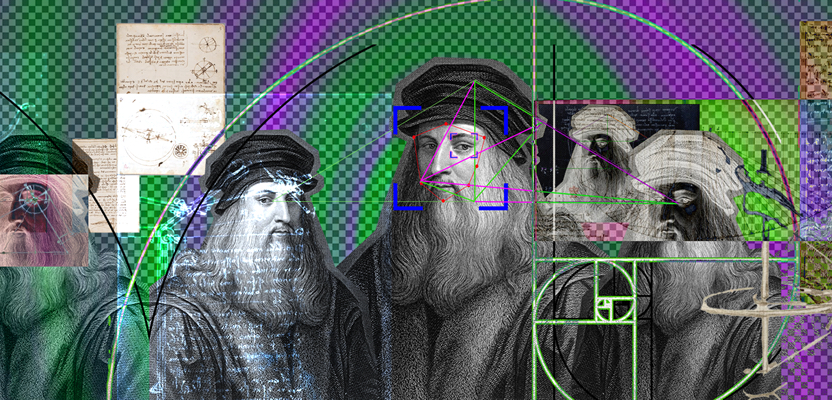
What can A.I. teach us about Italian Renaissance polymath Leonardo da Vinci? A lot, as we discovered from a new online retrospective from Google Arts and Culture that’s powered by machine learning.
“It’s a fascinating mini consumer Phd in Leonardo,” Amit Sood, founder and director of Google Arts and Culture, told Artnet News. He added that he personally enjoyed learning that the great artist was a left-handed vegetarian: “There’s a quote in one of the codices about being vegetarian and drinking wine in moderation—very practical health and well-being advice from Leonardo da Vinci!”
The expansive project, titled “Inside a Genius Mind,” is a collaboration with 28 institutions around the world, curated by noted Leonardo expert and art historian Martin Kemp (who recently offered an online masterclass on the artist). It features 3,000 drawings, including 1,300 pages of the Old Master’s famed codices, such as the 12-volume Codex Atlanticus.
Over 500 years after Leonardo’s death, these fragile manuscripts—rarely on view to the general public—offer the closest thing we have to a glimpse inside the mind of the artist, inventor, and engineer.
“Inside a Genius Mind,” a new online Leonardo da Vinci retrospective from Google Arts and Culture.
“Written back to front in semi-legible old Italian and covering subjects from science to anatomy to flight, the contents of [Leonardo’s] codices can feel overwhelmingly vast, varied, and inaccessible,” Kemp said in a statement. “‘Inside a Genius Mind’ transforms the diverse contents of the codices as an interactive visual journey, engaging audiences with a powerful tool to learn more about the complexities and connections that run throughout Leonardo’s genius.”
The team from Google used machine learning to sort through Leonardo’s prolific writings and drawings, presenting his oeuvre in thematic sections that represent the full breadth of his varied artistic and scientific output, and seemingly boundless, interdisciplinary ingenuity.
Leonardo da Vinci, Codex Atlanticus, folio 755 r. Collection of the Veneranda Biblioteca Ambrosiana, Milan, courtesy of Google Arts and Culture.
“We’ve always tried to use technology to build online projects that are very difficult to do in a physical realm,” Sood said. “We use machine learning to uncover visual ideas and similarities that will take the human eye much longer to see—or can’t see at all.”
“People know Leonardo’s art, but they don’t necessarily know his codices, because they are spread across different institutions. Bringing them into one platform was something that was important to us,” he added.
Google Arts and Culture digitizing Leonardo da Vinci’s wall paintings at the Sala delle Asse at Castello Sforzesco in Milan. Photo courtesy of Google Arts and Culture.
The project was a massive undertaking that involved working closely with museums in Poland, Italy, and France, among others. At some institutions, Google scanned all the drawings. It also digitized Leonardo’s room of wall paintings at the Sala delle Asse, at the Castello Sforzesco in Milan, which has been closed for renovations since 2012.
The online exhibition also includes impressive 3-D models and animations of some of Leonardo’s drawings and inventions, such as his flying machines. Google has been working with these visualizations for the last seven years, and is also offering them to museums to include in traditional exhibitions, where they can augment the irreplaceable experience of seeing Leonardo’s drawings in person.
Google Arts and Culture created this 3-D animation of Leonardo da Vinci’s “Leocopter.” Courtesy of Google Arts and Culture.
But “Inside a Genius Mind” aims to tell Leonardo’s incredible story in a way that appeals to both art history neophytes and experts, from the comfort of their own homes.
“The diversity of what Leonardo was able to accomplish in his lifetime is something that people are going to be inspired and surprised by,” Sood said. “In his sketches, he was not putting different disciples in silos. Everything seemed to merge and converge in different ways.”
Leonardo da Vinci, Ginevra de’ Benci. Collection of the National Gallery of Arts, Washington, D.C., courtesy of Google Arts and Culture.
The online exhibition also uses A.I. to generate playful mashups of Leonardo’s sketches, dubbed “Da Vinci’s Stickies.” It also transports you to the artist’s birthplace and final resting place courtesy of Google Street View, and offers a deep dive into the only Leonardo painting in North America, Ginevra de’ Benci at the National Gallery of Art in Washington, D.C.